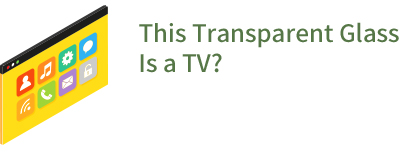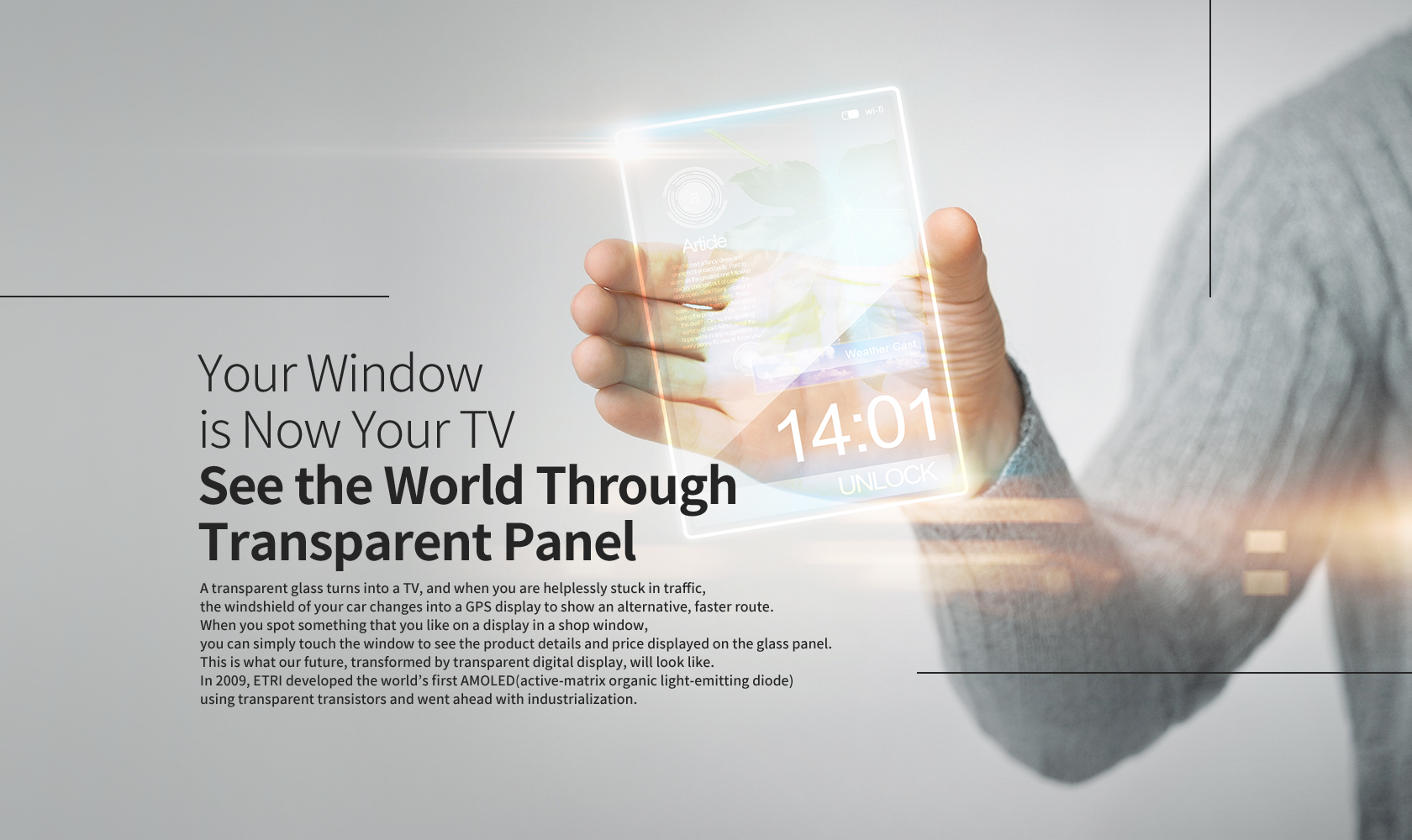
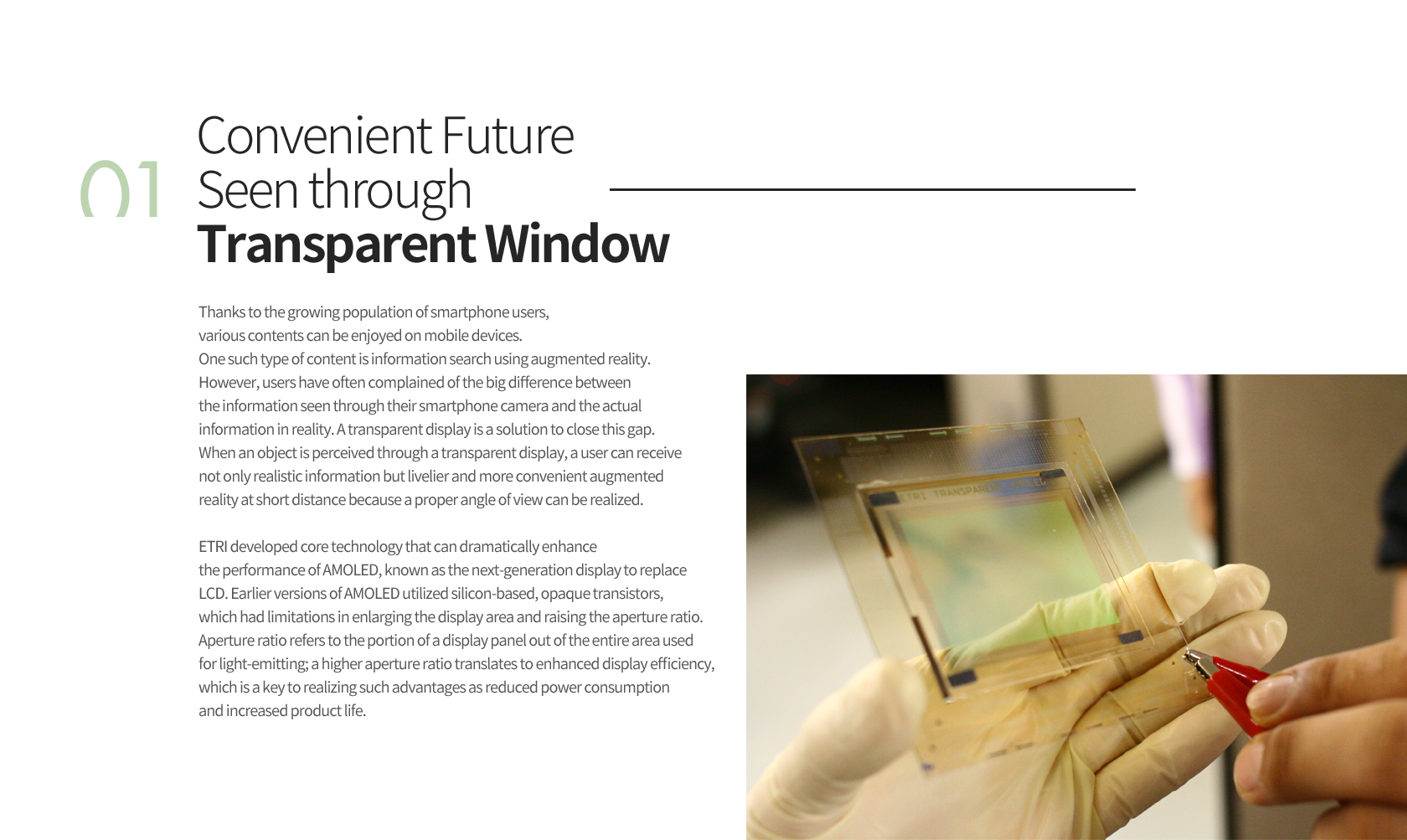

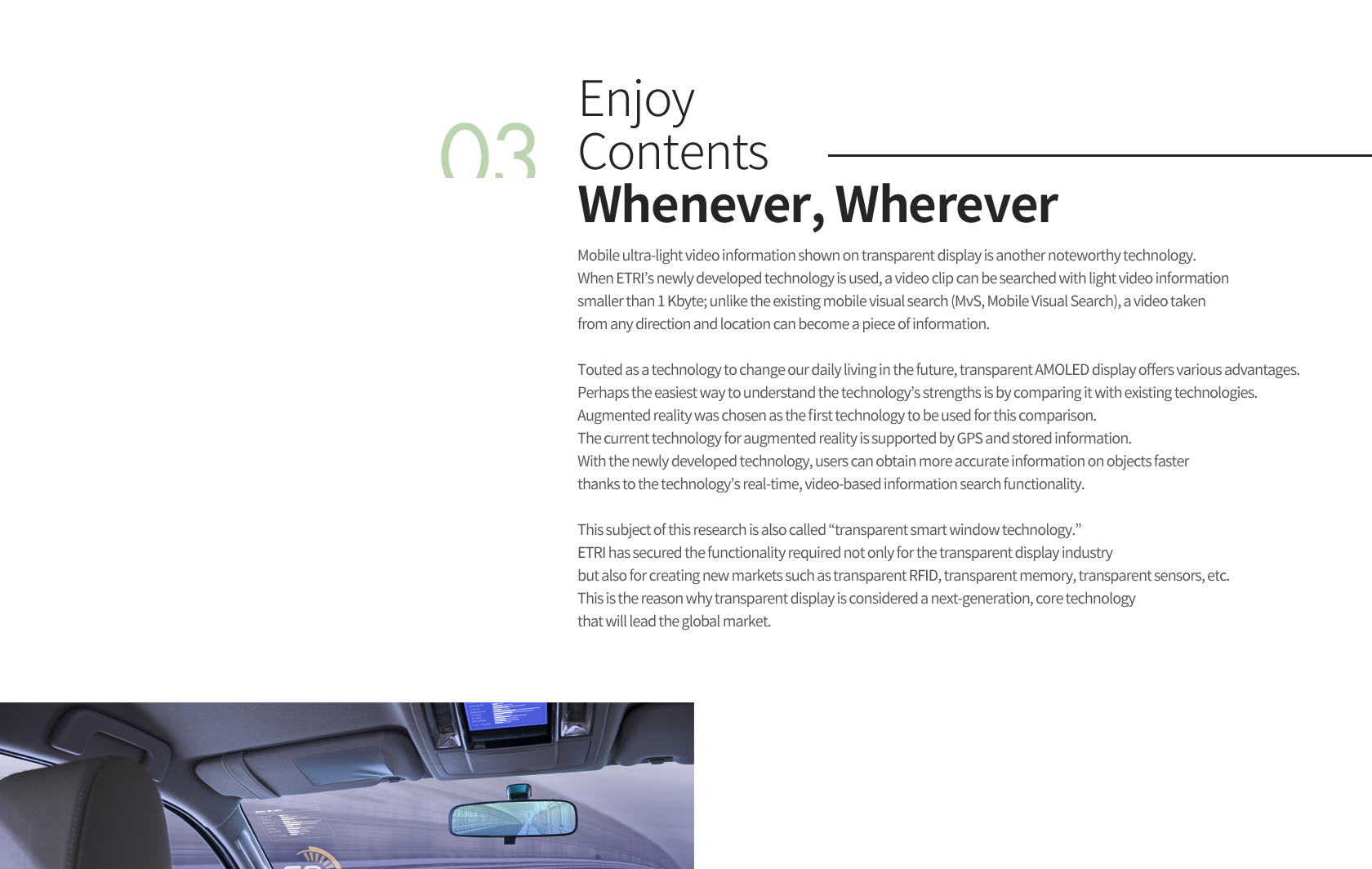
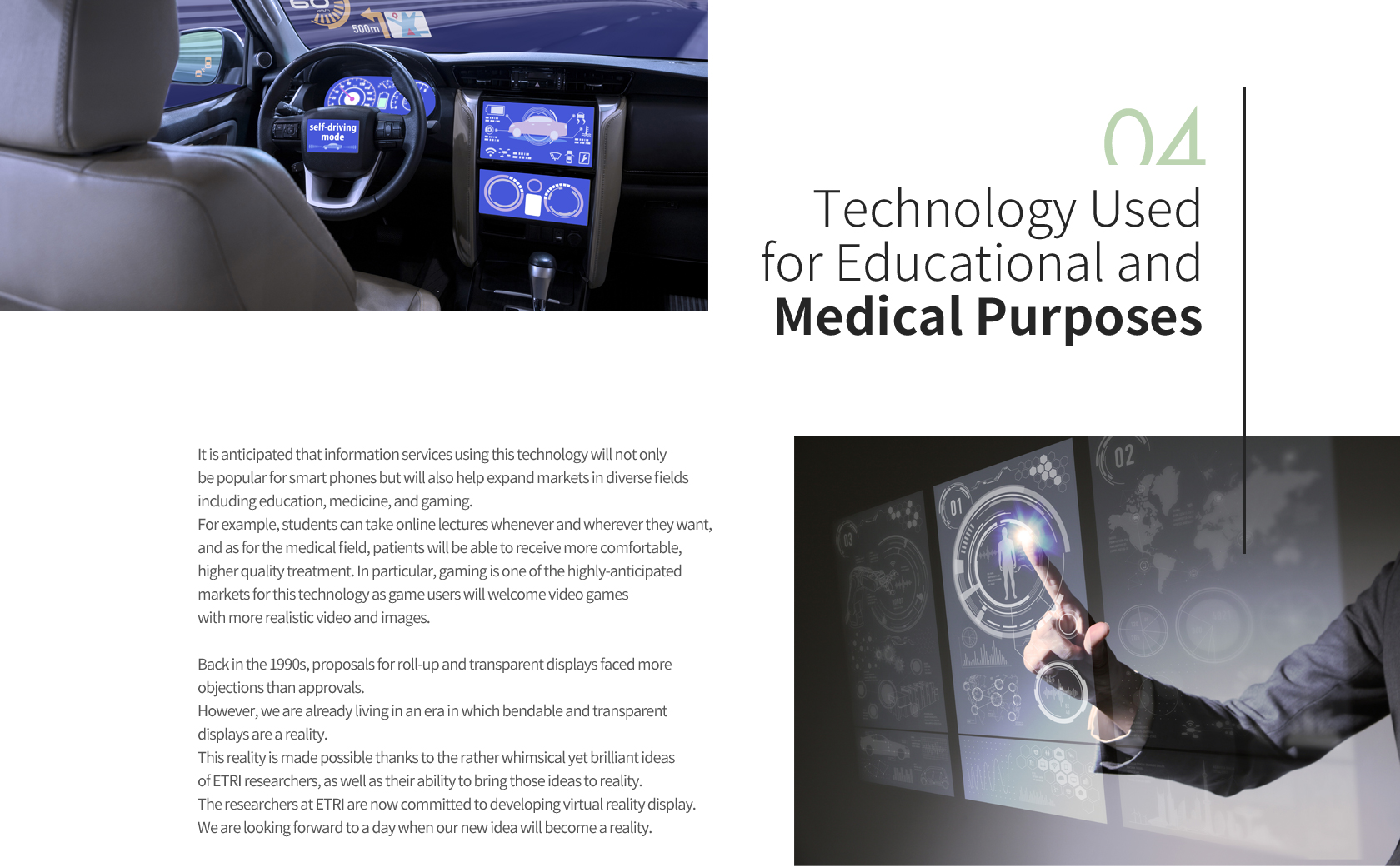
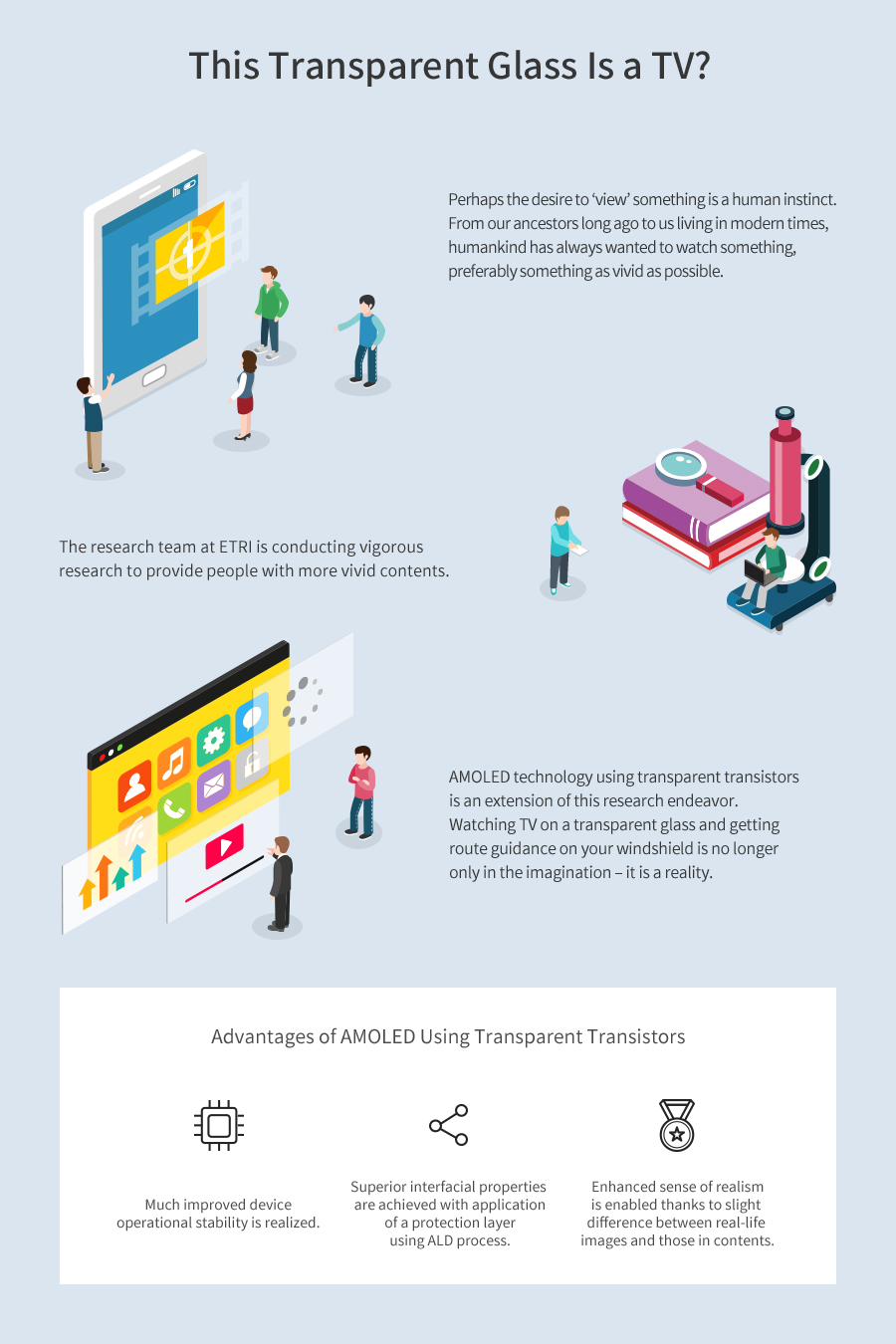
Your Window
is Now Your TV
See the World Through
Transparent Panel
AMOLED for Transparent Digital Display
A transparent glass turns into a TV, and when you are helplessly stuck in traffic, the windshield of your car changes into a GPS display to show an alternative, faster route. When you spot something that you like on a display in a shop window, you can simply touch the window to see the product details and price displayed on the glass panel. This is what our future, transformed by transparent digital display, will look like. In 2009, ETRI developed the world’s first AMOLED (active-matrix organic light-emitting diode) using transparent transistors and went ahead with industrialization.
01
Convenient Future
Seen through
Transparent Window
Thanks to the growing population of smartphone users, various contents can be enjoyed on mobile devices. One such type of content is information search using augmented reality. However, users have often complained of the big difference between the information seen through their smartphone camera and the actual information in reality. A transparent display is a solution to close this gap. When an object is perceived through a transparent display, a user can receive not only realistic information but livelier and more convenient augmented reality at short distance because a proper angle of view can be realized.
ETRI developed core technology that can dramatically enhance the performance of AMOLED, known as the next-generation display to replace LCD. Earlier versions of AMOLED utilized silicon-based, opaque transistors, which had limitations in enlarging the display area and raising the aperture ratio. Aperture ratio refers to the portion of a display panel out of the entire area used for light-emitting; a higher aperture ratio translates to enhanced display efficiency, which is a key to realizing such advantages as reduced power consumption and increased product life.

02
When Your
Imagination and
Reality Coincide
To overcome the shortcomings of existing transistors, ETRI developed oxide transistors that are transparent to light yet stable. ETRI’s successful development of AMOLED, with much enhanced aperture ratio, for the first time in the world enabled Korea to pursue early industrialization of the technology, helping the country secure the upper hand in the next-generation display competition with the US and Japan.
The new transistor developed by ETRI not only remedied the shortcomings of existing transistors but also improved “device operational stability,” which had been one of the main obstacles in applying oxide thin film transistors (TFT) to industrial purposes. Introduction of a protection layer resulted in enhanced interfacial properties, which in turn made possible the development of transparent oxide TFTs with electric and optical stability. In other words, achieving operational stability was the single biggest significance of this technology.
Furthermore, when a transparent display is used, the real world seen by a user is in greater agreement with the world seen through the transparent display, making it livelier and more realistic. More comfortable and realistic information services can be realized thanks to the use of a technology that supports visual congruity (synchronized angle of view).
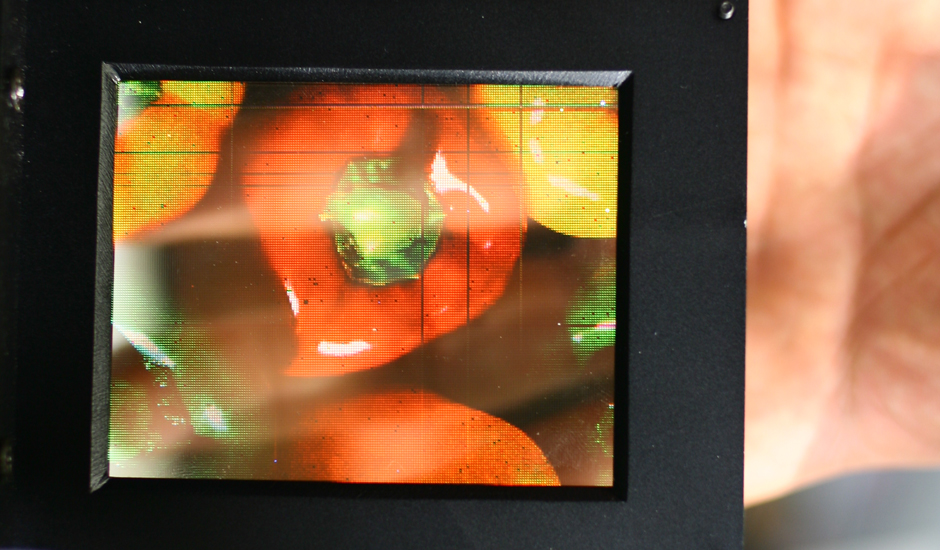
03
Enjoy
Contents
Whenever, Wherever
Mobile ultra-light video information shown on transparent display is another noteworthy technology. When ETRI’s newly developed technology is used, a video clip can be searched with light video information smaller than 1 Kbyte; unlike the existing mobile visual search (MvS, Mobile Visual Search), a video taken from any direction and location can become a piece of information.
Touted as a technology to change our daily living in the future, transparent AMOLED display offers various advantages. Perhaps the easiest way to understand the technology’s strengths is by comparing it with existing technologies. Augmented reality was chosen as the first technology to be used for this comparison. The current technology for augmented reality is supported by GPS and stored information. With the newly developed technology, users can obtain more accurate information on objects faster thanks to the technology’s real-time, video-based information search functionality.
This subject of this research is also called “transparent smart window technology.” ETRI has secured the functionality required not only for the transparent display industry but also for creating new markets such as transparent RFID, transparent memory, transparent sensors, etc. This is the reason why transparent display is considered a next-generation, core technology that will lead the global market.

04
Technology Used
for Educational and
Medical Purposes
It is anticipated that information services using this technology will not only be popular for smart phones but will also help expand markets in diverse fields including education, medicine, and gaming. For example, students can take online lectures whenever and wherever they want, and as for the medical field, patients will be able to receive more comfortable, higher quality treatment. In particular, gaming is one of the highly-anticipated markets for this technology as game users will welcome video games with more realistic video and images.
Back in the 1990s, proposals for roll-up and transparent displays faced more objections than approvals. However, we are already living in an era in which bendable and transparent displays are a reality. This reality is made possible thanks to the rather whimsical yet brilliant ideas of ETRI researchers, as well as their ability to bring those ideas to reality. The researchers at ETRI are now committed to developing virtual reality display. We are looking forward to a day when our new idea will become a reality.








